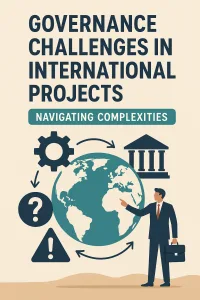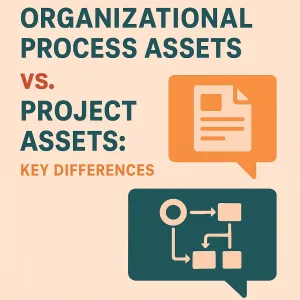Introduction
Two critical concepts often come into play: portfolio management and project management. While they may seem similar at first glance, they serve distinct purposes and require different approaches, particularly when it comes to engaging stakeholders.
Portfolio management is the process of managing a collection of projects and programs in a way that aligns with the organization’s strategic objectives. It focuses on optimizing resources, balancing risks, and ensuring that the portfolio delivers the expected benefits and value to the organization. This approach requires a broader perspective, as it encompasses multiple projects that may vary in scope and objectives, necessitating effective stakeholder communication and engagement throughout the lifecycle of the portfolio [4][8].
On the other hand, project management is concerned with the successful execution of individual projects. It involves planning, executing, and closing projects while managing the constraints of time, cost, and quality. Stakeholder engagement at this level is often limited to aspects directly related to the specific project, but it remains crucial for ensuring that the project meets its objectives and satisfies the needs of those involved [2][10].
The significance of stakeholder engagement cannot be overstated in either field. In portfolio management, stakeholders play a vital role in shaping the direction of the portfolio, providing insights that help prioritize projects and allocate resources effectively. Their involvement ensures that the portfolio aligns with the organization’s strategic goals and addresses the needs of various stakeholders [6][12]. In project management, engaging stakeholders is essential for understanding their expectations, managing their concerns, and fostering collaboration, which ultimately contributes to the project’s success [10][11].
This blog post aims to explore the role of stakeholders in both portfolio and project management, highlighting the differences in engagement strategies and the impact of effective stakeholder management on achieving organizational objectives. By understanding these dynamics, project managers and stakeholder relations professionals can enhance their practices and drive better outcomes for their organizations.
Understanding Portfolio Management
Portfolio management is a strategic approach that involves the centralized management of one or more portfolios, which may include programs and projects. The primary goals of portfolio management are to ensure that an organization’s projects align with its overall business strategy, optimize resource allocation, and maximize the value delivered to stakeholders. This process is crucial for making informed decisions about which projects to pursue, prioritize, and fund based on their potential impact and alignment with organizational objectives.
Key Objectives of Portfolio Management:
- Alignment with Business Strategy: Portfolio management ensures that all projects contribute to the strategic goals of the organization, thereby enhancing overall performance and effectiveness [3].
- Resource Optimization: It focuses on the efficient allocation of resources across various projects, ensuring that the organization can achieve its objectives without overextending its capabilities [1].
- Risk Management: By analyzing the portfolio as a whole, organizations can identify and mitigate risks associated with individual projects, leading to more informed decision-making [7].
Decision-Making Process in Portfolio Management
The decision-making process in portfolio management involves several critical steps:
– Analysis and Prioritization: Project managers analyze potential projects based on criteria such as strategic fit, resource requirements, and expected returns. This helps in prioritizing projects that align best with the organization’s goals [9].
– Selection: After analysis, projects are selected for inclusion in the portfolio based on their alignment with strategic objectives and available resources [9].
– Monitoring and Adjusting: Continuous monitoring of the portfolio’s performance allows for adjustments to be made as necessary, ensuring that the organization remains agile and responsive to changing conditions [1].
Key Stakeholders in Portfolio Management
Stakeholder engagement is vital in portfolio management, as it involves various key stakeholders who play significant roles in the decision-making process:
– Executives: They provide strategic direction and ensure that the portfolio aligns with the organization’s vision and goals [3].
– Sponsors: Project sponsors advocate for specific projects, providing necessary resources and support to ensure their success [3].
– Project Managers: They are responsible for the execution of individual projects within the portfolio and must communicate effectively with stakeholders to align project objectives with portfolio goals [12].
Influence of Stakeholder Engagement on Portfolio Success
Effective stakeholder engagement is crucial for the success of portfolio management. Engaging stakeholders throughout the portfolio management process helps to:
– Enhance Communication: Regular communication with stakeholders ensures that their needs and expectations are understood and addressed, leading to greater buy-in and support for the portfolio [6].
– Facilitate Decision-Making: Involving stakeholders in the decision-making process allows for diverse perspectives and insights, which can lead to more informed and effective decisions [8].
– Increase Accountability: When stakeholders are engaged, they are more likely to take ownership of their roles within the portfolio, leading to improved accountability and performance [6].
Portfolio management is a comprehensive approach that requires active engagement with stakeholders to ensure alignment with strategic goals, optimize resource allocation, and enhance overall project success. By understanding the importance of stakeholder engagement, project managers and stakeholder relations professionals can significantly improve the effectiveness of their portfolio management practices.
Understanding Project Management
Project management is a structured approach to planning, executing, and closing projects effectively and efficiently. It involves applying knowledge, skills, tools, and techniques to meet project requirements and achieve specific objectives. The primary goals of project management include:
- Delivering Projects on Time: Ensuring that projects are completed within the agreed-upon timeframe.
- Staying Within Budget: Managing resources and costs to avoid overruns and ensure financial viability.
- Meeting Quality Standards: Delivering outputs that meet the required quality criteria and stakeholder expectations.
- Satisfying Stakeholders: Engaging and managing the expectations of all stakeholders involved in the project.
Project Life Cycle and Phases
The project life cycle consists of several distinct phases that guide the project from initiation to closure. These phases typically include:
- Initiation: Defining the project, its objectives, and feasibility.
- Planning: Developing a detailed project plan that outlines tasks, timelines, resources, and budgets.
- Execution: Implementing the project plan, coordinating resources, and managing team activities.
- Monitoring and Controlling: Tracking project progress, managing changes, and ensuring alignment with objectives.
- Closure: Finalizing all project activities, delivering the final product, and conducting a post-project evaluation.
Key Stakeholders in Project Management
Stakeholders play a crucial role in project management, influencing its success and outcomes. Key stakeholders typically include:
- Project Team: Individuals responsible for executing project tasks and delivering outputs.
- Clients: Those who commission the project and have specific requirements and expectations.
- Vendors: External parties providing goods or services necessary for project completion.
- Management: Organizational leaders who provide support, resources, and oversight.
Impact of Stakeholder Engagement on Project Outcomes
Engaging stakeholders effectively can significantly impact project outcomes. The benefits of strong stakeholder engagement include:
- Enhanced Communication: Regular interaction with stakeholders fosters transparency and trust, leading to better collaboration.
- Increased Buy-in: Involving stakeholders in decision-making processes can lead to greater commitment and support for the project.
- Improved Risk Management: Stakeholders can provide valuable insights that help identify potential risks and develop mitigation strategies.
- Higher Satisfaction Levels: When stakeholders feel heard and valued, they are more likely to be satisfied with the project results, which can lead to future opportunities and partnerships.
Understanding project management and the role of stakeholders is essential for project managers and stakeholder relations professionals. By effectively engaging stakeholders throughout the project life cycle, managers can enhance project success and achieve desired outcomes.
Stakeholder Engagement in Portfolio Management
Stakeholder engagement is crucial, but its significance is amplified in portfolio management. This section delves into the specific practices and strategies for effectively engaging stakeholders within the context of portfolio management.
Identifying and Prioritizing Stakeholders
One of the foundational steps in stakeholder engagement is the identification and prioritization of stakeholders. In portfolio management, this involves:
- Mapping Stakeholders: Begin by laying out all potential stakeholders associated with the portfolio. This includes individuals, groups, or organizations that may influence or be influenced by the portfolio’s outcomes. A comprehensive stakeholder map helps visualize relationships and interests.
- Assessing Interests and Influence: Once stakeholders are identified, assess their interests and influence on the portfolio. This can be done through stakeholder analysis, which categorizes stakeholders based on their level of interest and power. Prioritizing stakeholders allows project managers to focus their engagement efforts on those who are most critical to the portfolio’s success [6][7].
The Role of Communication and Feedback Loops
Effective communication is the backbone of stakeholder engagement in portfolio management. It ensures that stakeholders are informed, involved, and aligned with the portfolio’s objectives. Key aspects include:
- Establishing Clear Communication Channels: Utilize various communication methods that resonate with stakeholders, such as meetings, newsletters, or digital platforms. Tailoring communication to stakeholder preferences enhances engagement and fosters a collaborative environment [9].
- Creating Feedback Loops: Implementing feedback mechanisms allows stakeholders to voice their opinions and concerns. Regularly soliciting feedback not only helps in addressing issues promptly but also strengthens relationships by demonstrating that stakeholder input is valued [4][8].
Tools and Techniques for Effective Engagement
Several tools and techniques can facilitate effective stakeholder engagement in portfolio management:
- Stakeholder Mapping: This visual representation helps identify relationships and the influence of various stakeholders. It can be a powerful tool for understanding the dynamics within the portfolio and planning engagement strategies accordingly [6].
- Stakeholder Analysis: This technique involves evaluating stakeholders based on their interests, influence, and potential impact on the portfolio. It aids in developing tailored engagement strategies that address the specific needs and concerns of different stakeholders [15].
- Engagement Strategies: Developing targeted engagement strategies based on stakeholder analysis ensures that communication is relevant and effective. This may include personalized updates, involvement in decision-making processes, or collaborative workshops [5][8].
Stakeholder Engagement in Project Management
Stakeholder engagement is a critical component of project management, as it directly influences the success of projects. Engaging stakeholders effectively ensures that their needs and expectations are met, which can lead to smoother project execution and better outcomes. Here are some key practices and strategies for engaging stakeholders in project management:
Identifying and Prioritizing Stakeholders
- Stakeholder Mapping: Begin by creating a stakeholder map to identify all potential stakeholders involved in the project. This visual representation helps in understanding the relationships and influence of each stakeholder on the project. It is essential to maintain this map throughout the project lifecycle to adapt to any changes in stakeholder dynamics [1].
- Prioritization: Once stakeholders are identified, prioritize them based on their level of influence and commitment to the project. Regularly revisiting these assumptions is crucial, as stakeholders’ positions may change over time. This prioritization helps project managers focus their efforts on engaging those stakeholders who have the most significant impact on project success [1][2].
Importance of Communication, Conflict Resolution, and Rapport Building
- Effective Communication: Open and transparent communication is vital for engaging stakeholders. Project managers should strive to understand the perspectives and concerns of stakeholders before attempting to influence them. This understanding fosters trust and encourages collaboration [4].
- Conflict Resolution: Conflicts may arise during the project due to differing interests among stakeholders. Having a clear conflict resolution strategy in place is essential. This involves actively listening to stakeholders’ concerns, facilitating discussions, and finding common ground to resolve disputes amicably [3].
- Building Rapport: Establishing strong relationships with stakeholders is fundamental. Building rapport can be achieved through regular interactions, showing appreciation for their contributions, and involving them in decision-making processes. This engagement not only enhances stakeholder satisfaction but also increases their commitment to the project [3].
Tools and Techniques for Effective Stakeholder Engagement
- Stakeholder Matrices: Utilizing stakeholder matrices can help project managers categorize stakeholders based on their influence and interest levels. This tool aids in developing tailored engagement strategies for different stakeholder groups, ensuring that communication and involvement are appropriate for each [12].
- Engagement Plans: Creating a stakeholder engagement plan outlines how and when stakeholders will be engaged throughout the project. This plan should include specific activities, communication methods, and feedback mechanisms to ensure stakeholders remain informed and involved [12].
- Feedback Mechanisms: Regularly monitoring stakeholder feedback through surveys or meetings allows project managers to make necessary adjustments to their engagement strategies. This iterative process helps in maintaining stakeholder satisfaction and addressing any emerging concerns promptly [9].
Comparative Analysis: Stakeholder Engagement in Portfolio vs. Project Management
Stakeholder engagement is a critical aspect of both portfolio management and project management, yet the approaches and goals can differ significantly between the two. Understanding these differences is essential for project managers and stakeholder relations professionals to effectively navigate their roles and enhance project outcomes.
Goals of Stakeholder Engagement
- Project Management: In project management, the primary goal of stakeholder engagement is to ensure that the needs, expectations, and concerns of stakeholders are addressed throughout the project lifecycle. This involves actively involving stakeholders in decision-making processes and maintaining open lines of communication to facilitate feedback and adjustments as necessary [3][11].
- Portfolio Management: Conversely, in portfolio management, the focus shifts to a broader perspective. The goal is to align stakeholder interests with the strategic objectives of the organization. This means engaging stakeholders not just on a project level but also considering how their input can influence the selection and prioritization of projects within the portfolio [2][9].
Differences in Stakeholder Influence and Involvement Levels
- Project Management: Stakeholders in project management typically have a direct influence on the project’s success. Their involvement is often more hands-on, as they may be directly impacted by project outcomes. This necessitates a more dynamic engagement process, where project managers must frequently assess and adapt to stakeholder needs and levels of commitment [4][7].
- Portfolio Management: In portfolio management, stakeholders may have a more indirect influence. Their engagement is often more strategic, focusing on how various projects align with organizational goals. Stakeholders may not be involved in day-to-day project activities but are crucial in the decision-making process regarding which projects to pursue and how resources are allocated [2][5].
Adapting Stakeholder Engagement Strategies
- Flexibility in Approaches: Stakeholder engagement strategies must be tailored to fit the context of either portfolio or project management. For project management, strategies may include regular updates, feedback sessions, and collaborative decision-making forums to ensure stakeholders feel valued and heard [6][8].
- Strategic Alignment in Portfolios: In portfolio management, strategies might involve stakeholder workshops to discuss project alignment with organizational goals, prioritization criteria, and risk assessments. This ensures that stakeholder insights are integrated into the broader strategic framework of the organization [2][15].
Case Studies and Scenarios
- Project Management Example: Consider a project aimed at developing a new software application. Stakeholder engagement might involve regular meetings with end-users to gather feedback on features and usability. This direct involvement can lead to a product that better meets user needs and enhances satisfaction [7].
- Portfolio Management Example: In a scenario where an organization is evaluating multiple project proposals, stakeholder engagement could involve a series of strategic discussions with senior management and key stakeholders to assess how each project aligns with the company’s long-term vision. This collaborative approach can lead to more informed decision-making regarding project selection and resource allocation [2][9].
While stakeholder engagement is vital in both portfolio and project management, the goals, levels of influence, and strategies employed differ significantly. By understanding these nuances, project managers and stakeholder relations professionals can enhance their engagement practices, ultimately leading to more successful project and portfolio outcomes.
Best Practices for Effective Stakeholder Engagement
In both portfolio management and project management, stakeholder engagement is crucial for success. Engaging stakeholders effectively can lead to better decision-making, increased support, and ultimately, the successful delivery of projects and programs. Here are some best practices to enhance stakeholder engagement in both contexts:
1. Stakeholder Identification and Analysis
- Early Identification: Begin by identifying key stakeholders as early as possible. This includes anyone who may be affected by the project or has an interest in its outcome, such as team members, clients, suppliers, and regulatory bodies. Understanding who your stakeholders are is essential for tailoring your engagement strategies effectively [4].
- Stakeholder Analysis: Conduct a thorough analysis to understand the interests, influence, and needs of each stakeholder. This can involve categorizing stakeholders based on their level of influence and interest in the project, which helps prioritize engagement efforts [7].
2. Continuous Communication and Feedback
- Regular Updates: Maintain open lines of communication with stakeholders throughout the project lifecycle. This can include regular email updates, meetings, and reports that keep stakeholders informed about progress and any changes [6].
- Feedback Mechanisms: Implement mechanisms for gathering feedback, such as surveys or informal check-ins. This allows stakeholders to voice their concerns and suggestions, fostering a sense of involvement and ownership in the project [3][9].
3. Leveraging Technology for Engagement
- Project Management Software: Utilize project management tools that facilitate collaboration and communication among stakeholders. These platforms can provide real-time updates, document sharing, and task tracking, making it easier for stakeholders to stay engaged and informed [9].
- Collaboration Tools: Incorporate collaboration tools like Slack or Microsoft Teams to enhance interaction among stakeholders. These tools can help streamline communication and ensure that everyone is on the same page, regardless of their location [9].
4. Fostering a Culture of Collaboration and Transparency
- Transparent Processes: Establish clear processes for decision-making and project updates. Transparency builds trust, as stakeholders can see how decisions are made and understand the rationale behind them [8].
- Encouraging Collaboration: Promote a culture where stakeholders feel comfortable sharing their ideas and concerns. This can be achieved through workshops, brainstorming sessions, and open forums that encourage dialogue and collaboration [5].
By implementing these best practices, project managers and stakeholder relations professionals can significantly enhance stakeholder engagement in both portfolio and project management. This not only leads to more successful outcomes but also fosters stronger relationships and a collaborative environment that benefits all parties involved.
Conclusion
Understanding the nuances of stakeholder engagement in both portfolio management and project management is essential for achieving success. Here are the key takeaways that highlight the differences and similarities in stakeholder engagement across these two approaches:
- Differences in Engagement Scope: In project management, stakeholder engagement is typically confined to the specific project at hand, focusing on the needs and expectations related to that project alone. Conversely, portfolio management requires a broader perspective, where stakeholder engagement encompasses multiple projects and their alignment with the organization’s strategic goals. This necessitates a more comprehensive approach to understanding stakeholder interests across various initiatives [2][9].
- Similarities in Importance: Regardless of the management approach, stakeholders play a critical role in both project and portfolio success. Their involvement can significantly influence outcomes, as effective stakeholder management ensures that their needs are addressed, leading to higher satisfaction and support for the initiatives. This is particularly true in project portfolio management, where stakeholder behavior and engagement are identified as key success factors [4][8].
- Best Practices for Engagement: To enhance stakeholder engagement, project managers and portfolio managers alike should adopt best practices that include systematic identification, analysis, and planning of stakeholder interactions. Engaging stakeholders from the outset of projects and portfolios can lead to more informed decision-making and ultimately improve the chances of success [6][7].
In conclusion, recognizing the distinct yet interconnected roles of stakeholders in both project and portfolio management is vital. By prioritizing stakeholder engagement and implementing effective strategies, project managers and stakeholder relations professionals can drive better outcomes and foster a culture of collaboration and support within their organizations.
Find out more about Shaun Stoltz https://www.shaunstoltz.com/about/.
This post was written by an AI and reviewed/edited by a human.



